HEY FRIEND!
I'm jemilla!
In the past 4 years, I’ve cut my teeth strategizing & writing award-worthy, revenue-increasing, results-snatching copy. And what really lights my fire is writing for woman-owned and BIPOC-led brands. I’m talkin’ the first day after a braiding appointment type of excited! Energizing them to go big with their bold ideas so that when launch time happens, the world thinks “OMG FINALLY, I’ve been waiting for something like this.” And giving them the tools to diversify the market.
about me
services
Social Media in Seconds: Quick Tricks for Your Content, Social SEO, and Management
July 21, 2025
Social media is one of the most popular online mediums to come out in the past 30 years. People have made friends from it, started businesses on it, and even made millions solely from social media. And that’s exactly why everyday people and businesses alike try so hard to do social media marketing to keep up with the Joneses.
But spending all day glued to your phone and trying to copy what the top influencers are doing isn’t a good strategy. Social media marketers — the people who make social media their job — leverage quick, strategic actions that create maximum impact in minimal time.
You could optimize your Instagram bio in 60 seconds, create a week’s worth of content in 15 minutes, and boost your social SEO with a 5-minute daily routine.
The “seconds” in this post’s title isn’t just clickbait—it’s a mindset shift. Instead of thinking about social media as this massive time commitment, I’m going to break everything down into micro-actions that fit into your actual life. These are strategies you can implement while waiting for your coffee to brew, during commercial breaks, or in the few minutes between meetings.
No more social media overwhelm, no more feeling like you’re always behind, and definitely no more sacrificing hours of your day to feed the content machine. Let’s transform your social media marketing from a time-consuming chore into a series of quick wins.

Content Creation With the Quickness
Before creating any content, ask yourself:
- Will my audience resonate with this?
- Is this relevant to me?
- Will this last more than 15 minutes of fame?
Then, spend 15 minutes coming up with content ideas that answer these 3 questions. You can do this by:
- Going to your favourite AI tool and plugging in this prompt: “I’m an aspiring content creator that enjoys [topic; e.g. fashion and lifestyle] and want to post on [platforms; e.g. Instagram, TikTok, and YouTube]. My aesthetic is a lot like [influencer(s); e.g., Jackie Asamoah and Clarke]. Can you please suggest some content ideas?”
- Use online tools to discover trending topics for your content
- Follow social media experts like Julia Broome or Alyssa from @inspiredmediaco for unique, low-effort content ideas
- When you think of a cool idea, write it down in your Notes app or record a voice memo if you get ideas out better through talking
And instead of creating content every day, which is SO exhausting, lean into ✨batching✨.
Choose one day of the week to create all your content for the week/next few weeks. To make this even easier, try and create a piece of content that you can actually turn into 5 pieces of content.
For example, a blog post like this could become a YouTube video, an Instagram carousel, a Tiktok video/Instagram reel, a weekly newsletter email, 5-10 pins on Pinterest, and a thread on Threads! In fact, I’ll show you exactly how I plan to repurpose this blog post:
- CAROUSEL → Social Media in Seconds: Quick Hacks For The Busy Business Owner
- CAROUSEL → Brands That Are Pros At Social Media Marketing
- REEL → How to Master SEO on Social Media
- REEL → Social Media Analytics & Optimization Made Easy
TikTok
- LONG VIDEO → How to Master SEO on Social Media
- LONG VIDEO → Social Media Analytics & Optimization Made Easy
- SHORT VIDEO → Tools To Help With Your Content & Social Media Marketing
- PHOTO CAROUSEL → Brands That Are Pros At Social Media Marketing
- PHOTO CAROUSEL → How to Batch Content & Make 20 Posts Out Of 5 Ideas
Social Media in Seconds: Quick Hacks For The Busy Business Owner
- VIDEO → Social Media in Seconds: Quick Hacks For The Busy Business Owner
- STATIC → Tools To Help With Your Content & Social Media Marketing
- CAROUSEL → How to Master SEO on Social Media
- CAROUSEL → Social Media Analytics & Optimization Made Easy
- CAROUSEL → How to Batch Content & Make 20 Posts Out Of 5 Ideas
Twitter & Threads
- POST 1 → How to Batch Content & Make 20 Posts Out Of 5 Ideas
- POST 2 → Social Media in Seconds: Quick Hacks For The Busy Business Owner
- POST 3 → How to Master SEO on Social Media
- POST 4 → Social Media Analytics & Optimization Made Easy
The main thing to remember with different platforms is this:
- LinkedIn: Add industry context and professional insights
- Instagram: Focus on visuals, use relevant hashtags, and SEO keywords in the actual post
- Facebook: Make it conversational and community-focused
- Twitter/Threads: Break it into a thread with key takeaways
- TikTok/Reels: Use trending audios and quick, eye-catching editing
- Pinterest: Create pins for your existing content and offers, pin consistently, and use keyword-rich descriptions & boards
- YouTube: Repurpose long-form content into short-form YouTube Shorts, and add text overlays or captions to make the content accessible without audio
Speedy Social SEO Hacks
Do keyword research on each platform’s search bar
Type your main keyword into each platform’s search bar and write down the auto-complete suggestions. These are real searches happening right now! You can use these suggestions as content topics, hashtags, and caption keywords.
Then, check what content appears in the “top” results for your keywords. What formats are performing well? What angles are people taking? This gives you insight into what the algorithm is prioritizing for your topic.
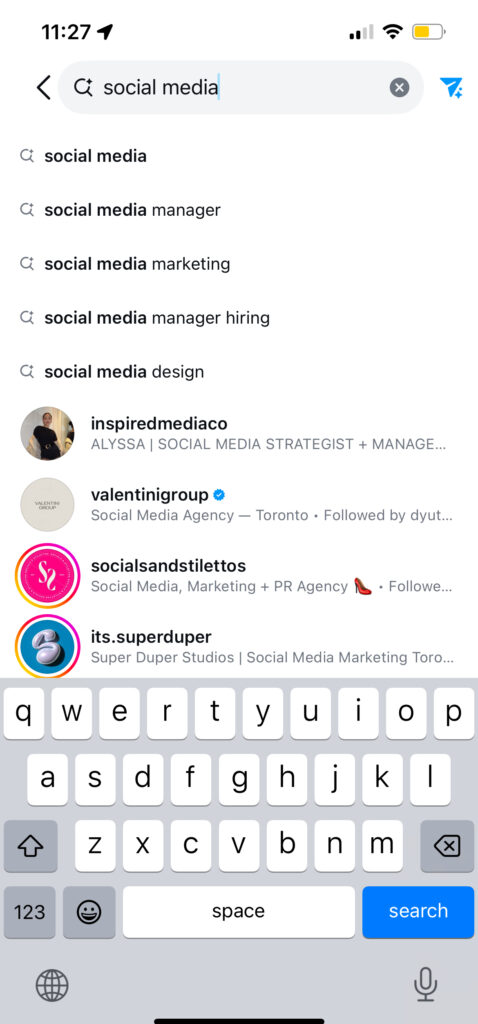
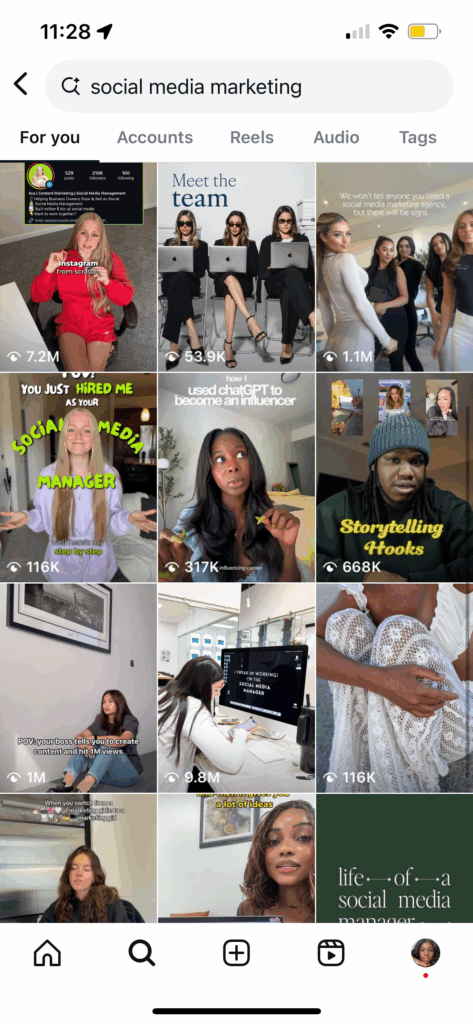
The hashtag formula
Use an equal amount of broad hashtags (high competition, high reach), niche hashtags (medium competition, targeted audience), and specific hashtags (low competition, highly relevant). This balance helps you reach both large and targeted audiences.
To make things easier for you, create and save hashtag sets for different content themes so when posting, you can copy and paste the relevant set rather than looking for hashtags every time.
Optimize your social media bio for search
Include your main keyword in your bio, but make it sound natural, engaging, and more specific. So instead of “Business Coach,” try “Helping entrepreneurs build profitable businesses.” If anything, you can still put that main keyword in your profile name, like “Jemilla | Copywriter, Social Media Coordinator, Content Creator”.
Use line breaks and emojis strategically to make your bio scannable. Most people spend less than 3 seconds reading bios, so make the most important information jump out immediately.
Here’s my bio for reference:
💅🏾 The small business copywriter for baddies
📑 Clarify your message, captivate your audience, + sell more
Your brand’s next era starts here ⤵
Boost your discoverability with alt-text
Alt text is what helps describe your content, and you can add alt-text to posts! Try to include 1-2 relevant keywords naturally, but prioritize describing what’s actually in the post. This helps both accessibility and discoverability.
For carousel posts, make each slide’s alt-text specific to that image while maintaining keyword consistency throughout the whole thing.
Go the extra mile with keywords in the post
Hashtags alone aren’t enough to expand your reach anymore. You can take keywords and type them out directly in an Instagram Reel or TikTok video, and move it out of frame so it’s not seen, but still helping you rank! This adds another element of SEO on top of the hashtags you use.
Tag the location for your local business
Always tag your business location, but also tag relevant local landmarks, events, or popular spots nearby. This expands your reach to people exploring your area, even if they haven’t heard of your business.
I just found this out — service-based businesses can tag client locations (with permission) to appear in local searches in multiple areas you serve. Cool, huh?
Be smart with how you jump on trends
Trying to keep up with every trend is unsustainable, and it’ll only lead to burnout. Only engage with trends that naturally connect to your expertise, your niche, or brand values. If you have to force the connection, skip it. Authentic participation in relevant trends always does better than forced participation in every trend.
When you do participate in trends, add genuine value rather than just copying the format. Ask yourself: what unique perspective can you bring to this conversation?
Content Planning and Scheduling Shortcuts
Create templates for your different posts
Create templates for your most common post types. For example, tips, behind-the-scenes, client features, educational content, day-in-my-life, and personal stories. Having a structure ready means you can fill in the details quickly without starting from scratch each time.
Save successful post formats as templates. When a post performs well, analyze its structure and create a template you can use again with different content.
Like my Copywriting 101 video series!
@storytellastudios POV: Your digital product looks amazing but people aren’t buying or using it 😩 Plot twist/ it’s probably your UX copy! Class 18 of Copywriting 101 is here, and we’re diving into how to write words that actually HELP users navigate your stuff. I’m breaking down why clarity beats cleverness every time. Save this if you’re creating digital products, websites, or apps! What’s the most confusing digital product you’ve ever used? Tell me in the comments 💬 #Copywriting101 #UXCopy #DigitalProducts #CopywritingTips #UXWriting #SmallBusiness
♬ It girl, Fashion, Glamour – Athostvz
Have content pillars so you never run out of ideas
Maintain five content pillars that align with your brand; e.g., education, inspiration, entertainment, promotion, and personal. When you need content quickly, pick a bucket and create something that fits that category! Keep a running list of content ideas in each bucket. When inspiration strikes, quickly categorize and save the idea for later .
Post using a “content sandwich”
This is for businesses → structure your weekly content like a sandwich: valuable content on the outside (Monday and Friday), with promotional or personal content in the middle (Wednesday). This ensures you’re providing value while still promoting your business and people, and it works because it front-loads and back-loads value—making your promotional content feel balanced, not pushy.
Emergency content backup plans for busy weeks
My schedule STAYS busy, and it helps to have evergreen content at the ready that I can use when life gets in the way. These might be favourite tips, popular past content, or simple FAQs that generate engagement—so create a ready-to-post “content emergency kit”.
Stay authentic with spontaneity
Obviously you want to schedule your core content, but leave room for spontaneous posts that respond to current events, trending topics, or real-time interactions. The best social media presence combines planned strategy with authentic spontaneity. Look at your scheduled content weekly to ensure it still feels relevant and authentic when it posts. Social media moves fast, and what felt right last week might not resonate today.
Engagement and Community Management
I’m going to make this real quick for you:
- Spend 2 minutes liking posts in your feed, leaving thoughtful comments, check your DMs, respond to IG Stories, and make sure you’re not spamming. Be authentic with this
- Save response templates for frequently asked questions—there’s even a feature on Instagram where they can tap the FAQs when first DMing you, and see the answer
- Follow accounts that align with your ideal client profile, industry leaders, and potential collaborators. Unfollow accounts that no longer serve your goals or inspire your content strategy
- Consistently like and respond to comments from your regular followers. These micro-interactions build familiarity and loyalty over time. People want to feel seen and appreciated by the accounts they follow
- Remember details about your engaged followers—referencing these details in future interactions shows you pay attention and care about them
- Choose 2-3 platforms to focus on rather than trying to maintain a presence everywhere. It’s better to be consistently excellent on fewer platforms than sporadically mediocre on many
- Dedicate specific times for each platform rather than constantly switching between them
Analytics and Optimization Made Easy
The 3-metric rule
Focus on three metrics that directly relate to your business goals:
- Reach (how many people see your content)
- Engagement rate (how many people interact)
- Conversions (how many take desired actions)
Ignore vanity metrics that don’t impact your bottom line, and check these metrics weekly, not daily.
10-minute monthly performance reviews
Spend 5 minutes identifying your top-performing content from the month. What made it successful? Spend another 5 minutes noting your least successful content. What can you learn or avoid next month?

A/B testing
Test one thing at a time: posting time, caption length, image style, or hashtag strategy. Testing multiple variables simultaneously makes it impossible to identify what actually made the difference. Run tests for at least two weeks to account for normal fluctuations in reach and engagement. And now, on Instagram, you can do trial reels to test your video with a new audience!
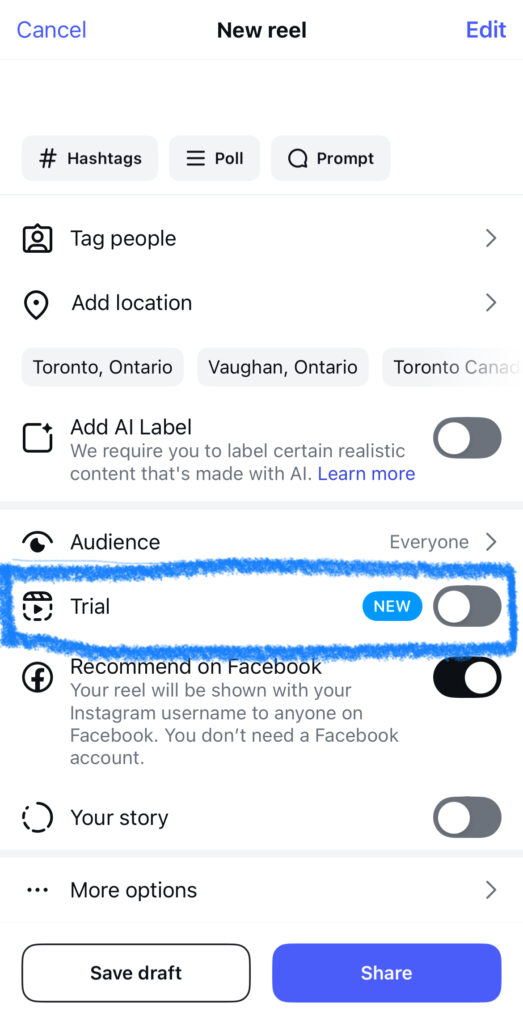
Quick fixes for underperforming content
If a post isn’t performing well in the first hour, add relevant hashtags, share it to your story, or post it to other platforms. Sometimes content just needs more visibility to find its audience. You can also repurpose underperforming content in a different format. For example, a low-engagement caption might work better as a video, or an ignored infographic might succeed as a carousel post.
Tools and Resources
Canva: Use their social media templates and brand kit feature to maintain visual consistency across all platforms without design experience.
CapCut and Inshot: Use their video templates, text overlays, and editing features to create engaging, algorithm-friendly videos
Google Trends: Discover trending topics for your content
SparkToro: Identify and understand your target audience with insights into where they hang out online and their interests
TikTok’s Creator Search Insights: See what people on TikTok are searching for, what’s trending, get creator tips, see related content and explore more topics
ContentIdeas: This is a free AI-powered tool designed to help marketers, content creators, and businesses generate personalized content suggestions
Answer the Public: Uncover the questions people ask Google on different topics
Notion: Great for writing down your ideas and planning out your ideas in a content calendar
Wrapping it Up
And there you have it! Social media fixes in seconds. When you implement these micro-strategies consistently, you can build so much momentum without the burnout.
Remember that your audience doesn’t need you to be a social media guru—they need you to show up authentically and provide value. These quick tricks simply make showing up easier and more sustainable!
Remember, social media is a marathon, not a sprint. The compound effect of small, consistent actions will serve you better than any viral moment or growth hack. Start with one or two tips that resonate with your current situation, master them, then gradually do more.
Your future self—the one who isn’t stressed about social media, who has a steady stream of engaged followers, and who actually enjoys creating content—is just a few “seconds” away. The only difference between where you are now and where you want to be is implementing these simple systems consistently.
Stop waiting for the perfect moment, the perfect content, or the perfect strategy. Start with imperfect action today, and let these quick wins build the social media presence your audience wants to see.

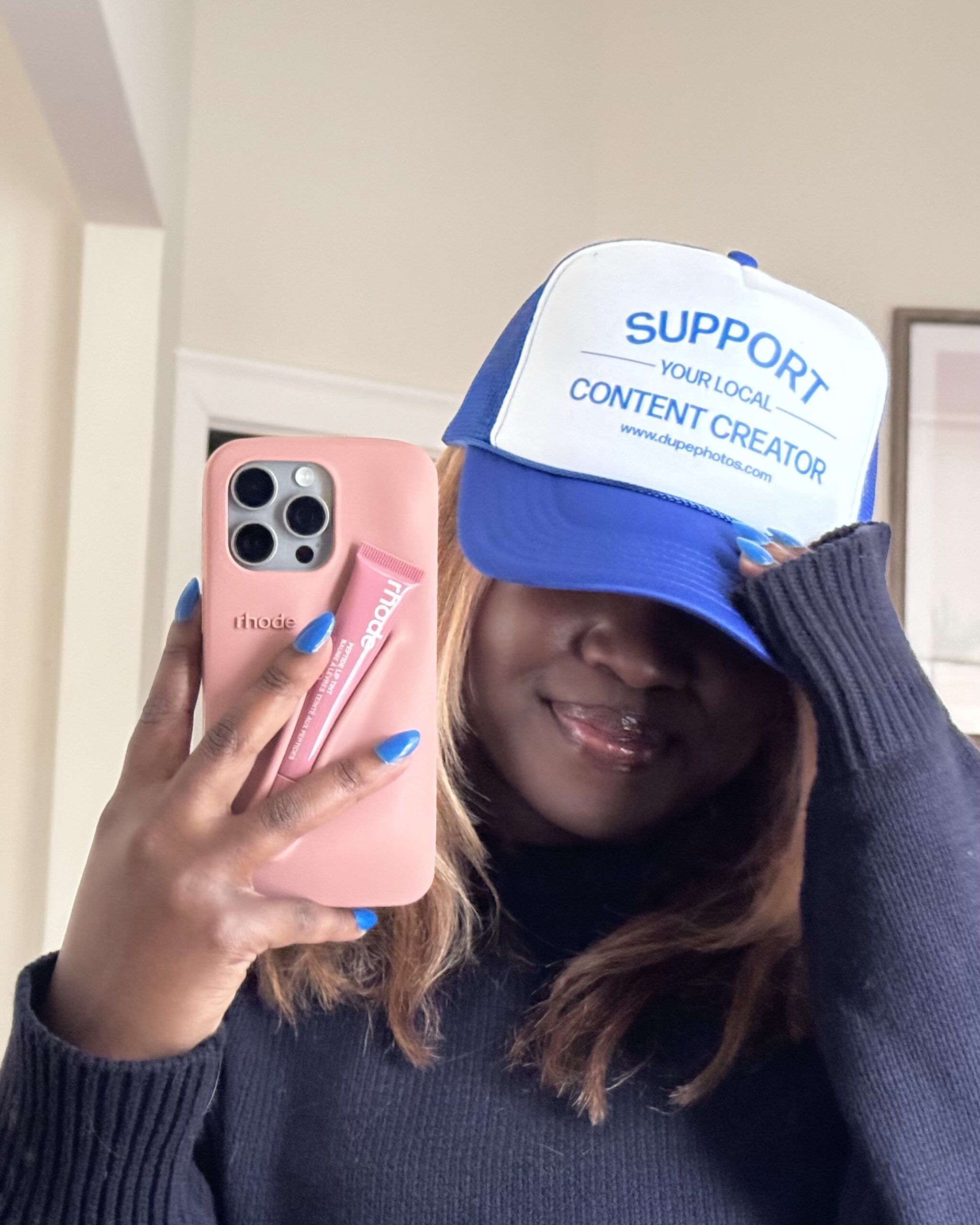



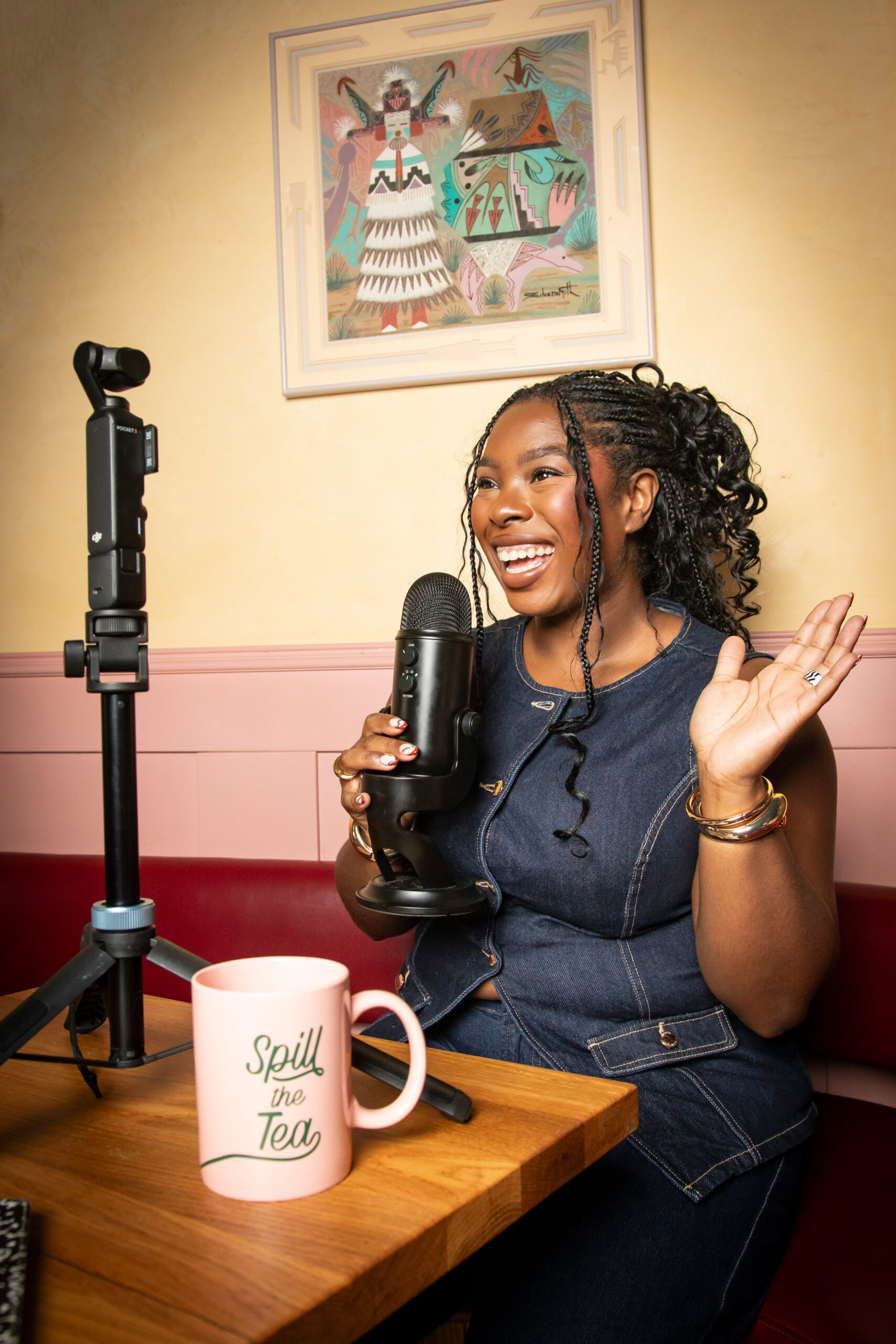

Great article! Babe, you’re absolutely amazing! Every detail is just perfect, you’re my source of inspiration. I have to give you a huge shout-out! 👍<a href="https://www.ph777-casino.ph/” rel=”nofollow ugc”>https://www.ph777-casino.ph/